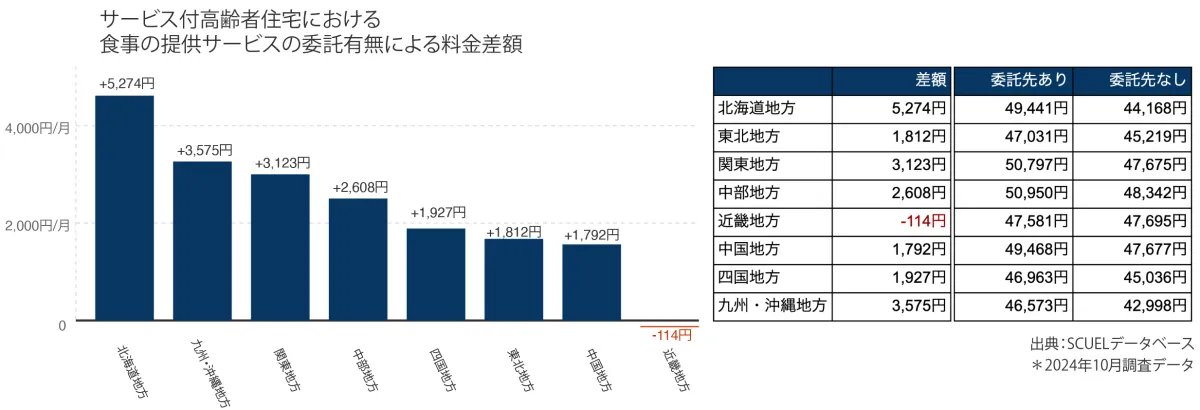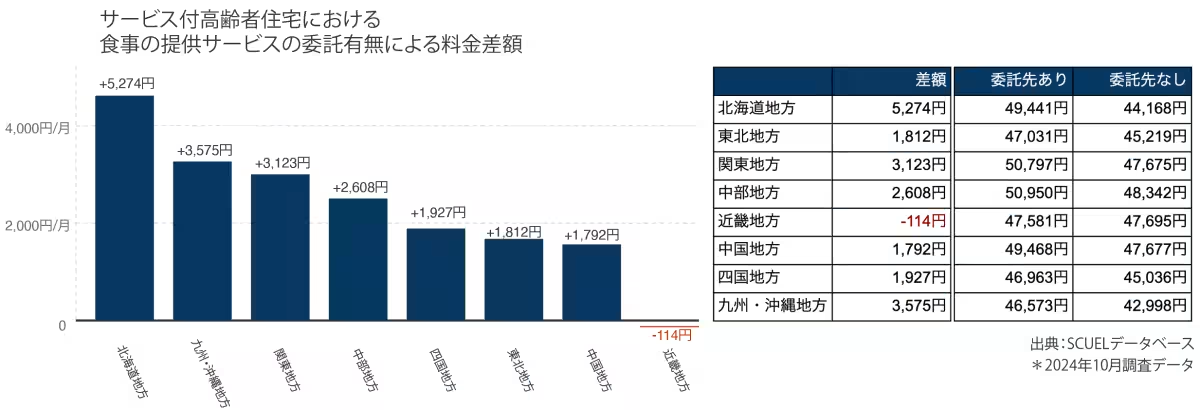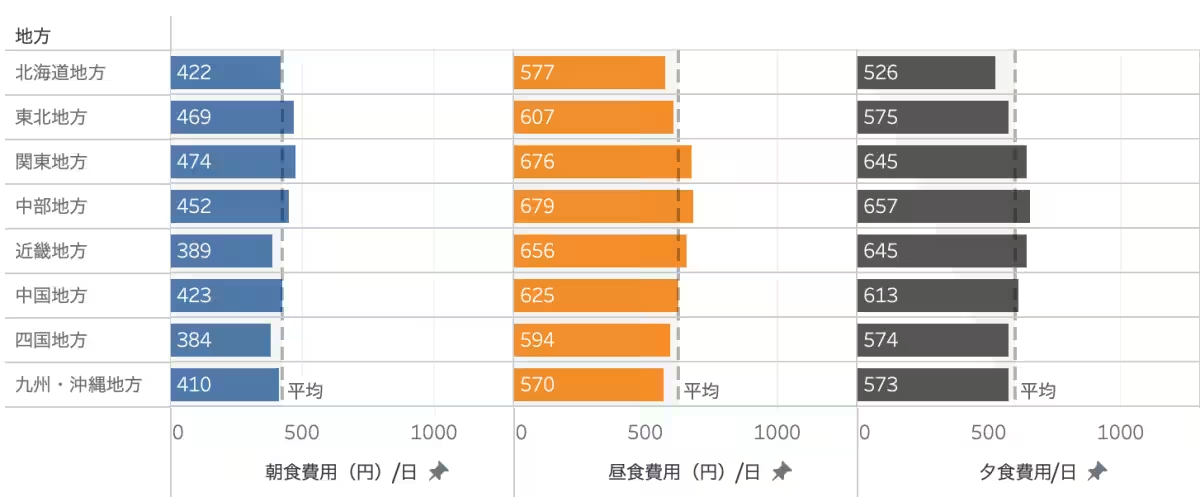

Analyzing Regional Differences in Food Costs at Care Facilities Across Japan
Understanding the Trends in Food Costs at Care Facilities
The rapidly changing landscape of elder care in Japan has underscored the importance of food service costs within care facilities. Recently, Meikan Company, based in Tokyo, utilized their proprietary database, SCUEL, to delve into the nuances of food pricing across approximately 40,000 nationwide care facilities. Their analysis sheds light on the disparities in food costs based on regional differences, outsourcing situations, and the strategies employed by various corporations.
Overview of the Analysis
Meikan's rigorous analysis methodically categorized food expenses into distinct segments, considering factors such as facility type, geographical location, and operational scale. The data, though originally unstructured, was cleaned and organized using advanced AI techniques, leading to a structured analysis that reveals actionable insights for key stakeholders in the caregiving sector.
The findings are particularly relevant for food service providers and facility operators, allowing them to make informed decisions regarding menu offerings, pricing strategies, and overall operational efficiencies.
The main areas of focus included:
1. The cost differences between facilities with and without outsourced food services.
2. Variations in food expenses by region and meal distribution patterns throughout the day.
3. Pricing discrepancies depending on the capacity of the facility.
4. Comparative analysis of food costs among corporations operating assisted living facilities.
Through this multi-faceted approach, the report aims to equip service providers with insights that could enhance service quality and user satisfaction while promoting cost efficiency.
Contextual Background: Shifts in Meal Provisioning
In recent times, the elder care industry has been grappling with challenges such as labor shortages and rising ingredient costs. The industry is, therefore, undergoing a transformation in food service methods. This includes shifts in operational models — moving from in-house cooking to external provision and the evolution from traditional catering to chilled deliveries followed by reheating.
The data dives deep into how different corporations often turn to various providers for food services, hinting at an inclination towards local sourcing strategies tailored to region-specific needs. Notably, even major nationwide corporations are adapting their services to resonate with regional characteristics effectively. This trend signals an upcoming realignment in outsourcing and food service methodologies across the market.
Furthermore, the ability to transfer rising costs to pricing indicates significant disparities between regions and facilities, highlighting a critical aspect of operational strategy for service providers. The SCUEL dataset stands as fundamental groundwork for these strategic developments.
Meal Provisioning Techniques and Analytical Methods
Food service in care facilities can be broken down mainly into three categories:
1. In-House Cooking: Facilities with full kitchens and staff preparing meals daily.
2. Chilled Delivery with Reheating: Meals prepared externally and delivered chilled for heating on-site.
3. Complete Outsourcing: Ready-to-eat meals delivered individually packaged.
SCUEL's thorough dataset encompasses various details like food cost per meal category, number of kitchen staff, total capacity, and utilization rates, allowing for predictive analytics on meal provision methods likely to be adopted by different facilities.
Pricing Discrepancies Related to Outsourcing
The data analysis provides compelling insights particularly regarding Service Assisted Housing (SAH) facilities. It revealed a marked cost difference contingent on whether services were outsourced:
- - Outsourced Facilities: Report an average monthly payment ranging from 49,000 to 52,000 yen, particularly high in regions like Tochigi, Shizuoka, and Nagano, where meals provided by external services tend to be more expensive.
- - Non-Outsourced Facilities: Typically, they showed a lower monthly fee by 3,000 to 4,000 yen in several prefectures, contrasting with figures seen in Hokkaido, indicating a significant price gap of about 5,300 yen under similar conditions.
Interestingly, certain prefectures exhibited an anomaly where non-outsourced facilities reported higher costs, thereby challenging conventional understanding. For instance, Shiga's non-outsourced facilities averaged 49,523 yen, exceeding costs at outsourced units.
Regional Pricing and Meal Weight Comparisons
In analyzing food costs for long-term elder care services, one can observe distinctive pricing methodologies differing by prefecture:
- - Urban Centers: In Tokyo and Kanagawa, meal prices tend to exceed 700 yen for lunch, marking it as the highest in Japan, while breakfast rates take a back seat at comparatively lower prices.
- - Kinki Region's Breakfast Pricing: Places like Kyoto and Osaka showcased some of the lowest breakfast costs in the country, aligning strategically with lunch and dinner prices.
- - Evening Meal Focus in Tokai Region: The pricing in regions like Aichi indicate a cultural emphasis on dinner, leading to prices that reflect this trend.
Data across these various provincial analyses provides a window into how regional culinary cultures and operational strategies intersect, highlighting the business decisions surrounding caregiving services.
Differentiation by Facility Size
Data from SCUEL indicates a clear link between facility size and food costs:
- - Small Facilities (Up to 19 Residents): Average monthly costs stand at approximately 45,140 yen.
- - Medium Facilities (20-59 Residents): A noticeable uptick in pricing, with costs escalating from around 47,787 yen for smaller medium facilities to 49,572 yen for larger counterparts.
- - Larger Facilities (60+ Residents): Show a peak at approximately 50,282 yen for facilities serving 60 to 79 residents, with marginal declines seen in larger capacities.
Comparative Insights Among Operators
The report also exposed dramatic differences in meal costs among various operators managing assisted living facilities, suggesting three primary tiers based on pricing strategies:
1. High-End Providers: Offering monthly costs exceeding 70,000 yen, potentially catering to a select clientele prioritizing food quality and choice.
2. Mid-Tier Institutions: With costs typically around 50,000 yen, these entities balance quality and scale by focusing on multiple units nationally.
3. Lower-Tier Providers: More economical choices, often around the 30,000 yen mark, focus on efficient operational models and cost management.
Conclusion and Free Report Availability
Meikan Company is currently circulating a distilled version of their findings in a free report. With thorough analyses covering regional average costs, variations based on outsourcing, and detailed categorizations of meal expenses, this report serves as an invaluable resource for businesses within the food service sector aimed at care facilities. Anyone engaged in the caregiving, catering, or food service supply industries will find this information highly beneficial in refining their market approach.
For further inquiries or to download the detailed free report, visit Meikan Company's official website.



Topics Consumer Products & Retail)










【About Using Articles】
You can freely use the title and article content by linking to the page where the article is posted.
※ Images cannot be used.
【About Links】
Links are free to use.